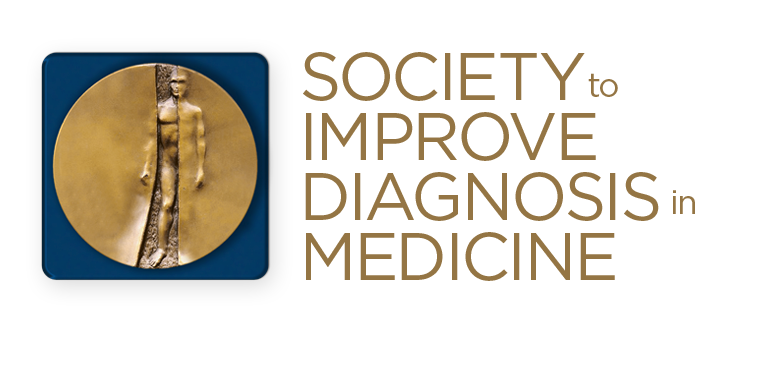Engaging Patients and Families in Diagnostic Quality – Two New SIDM Resources
 In an earlier issue of ACT Update we shared news of a meeting cohosted by the Society to Improve Diagnosis in Medicine (SIDM) and the National Academy of Medicine (NAM) with representatives from more than 20 Patient and Family Advisory Councils (PFACs) from across the country. The rich discussions held at the meeting led to the creation of two important guides that describe the value of leveraging PFACs to improve diagnostic quality and safety.
In an earlier issue of ACT Update we shared news of a meeting cohosted by the Society to Improve Diagnosis in Medicine (SIDM) and the National Academy of Medicine (NAM) with representatives from more than 20 Patient and Family Advisory Councils (PFACs) from across the country. The rich discussions held at the meeting led to the creation of two important guides that describe the value of leveraging PFACs to improve diagnostic quality and safety.
According to the Agency for Healthcare Research and Quality (AHRQ), a PFAC is a group of patients, family members, office staff, and primary care providers working together to improve safety, quality, and the patient experience. In 2015 it was reported that there are more than 2,000 PFACs across the United States. That number has surely grown since Centers for Medicare and Medicaid Services (CMS) issued metrics for patient and family engagement and some states, such as Massachusetts require meaningful patient and family engagement for all their hospitals.
As noted in the guides – “The active involvement of patients and families is critical for reducing diagnostic errors, though it is important to understand that two levels of engagement are required; engagement of individual patients and families within their own diagnostic journey, and engagement of PFACs, patients, and families in systemic or institutional diagnostic improvement efforts.”
Each guide has a unique audience –
- One was developed specifically for PFAC leaders and members, helping them build strategies and identify opportunities to partner with hospital and health system leadership to improve diagnostic quality and safety.
- The other guide was developed with hospital and health system leaders in mind. It describes how hospital and health system leadership can work with PFACs and other patient and family partners to take tangible steps toward reducing diagnostic error.
“The lived experience of patients and families is a tremendously rich source of data and learning,” said Suz Schrandt, JD, SIDM’s Senior Patient Engagement Advisor. “Given the growing ubiquity of PFACs, the question is not whether to work with PFACs to tackle diagnostic quality and safety, it is how to do it, and how to do it most efficaciously.”
Why should PFACs focus on diagnostic quality and safety?
PFACs have the capacity to improve diagnostic quality and safety for several reasons:
- Patients and families observe care across all settings (for example, outpatient clinics, emergency departments, and/or postsurgical recovery units), while care providers and leaders often see care provided within a limited or narrow context. The observations of PFAC members provide valuable information about areas of risk.
- PFACs are very powerful at driving change. When PFAC members share personal stories about diagnostic error, care providers and leaders better understand the impact of errors and the urgent need to prevent them.
- PFACs have access to the local community. PFAC members can effectively share information with community members to help them navigate their healthcare experiences.
- The role of PFACs is expanding due to CMS requirements and the increasing emphasis on patient and family engagement among research funders like the Patient-Centered Outcomes Research Institute’s (PCORI). The mounting evidence of the value and impact of partnering with patients and families means that PFACs will have even more opportunities to give input about diagnostic quality and safety in the future.
Why should hospitals and health systems engage PFACs in diagnostic quality and safety?
Leadership in clinical institutions with effectively integrated patient and family advisors and PFACs tend to demonstrate a set of important behaviors. These include:
- Modeling the belief and practice that patients and families have unique expertise and knowledge.
- Ensuring staff and other infrastructure support for PFACs and patient or family advisors.
- Inviting patients, family advisors, and PFACs to identify priorities, provide feedback on safety issues and concerns, and participate in “walkabouts” to tour the organization and give feedback on possible safety concerns.”
The PFAC Leaders’ Guides were made possible, in part, with support from The Mont Fund.

Download the PFAC Guides
SIDM has released two guides that describe the value of leveraging PFACs to improve diagnostic quality and safety. Each guide leverages the lived-experience, insights, and expertise of PFACs to help drive change.
